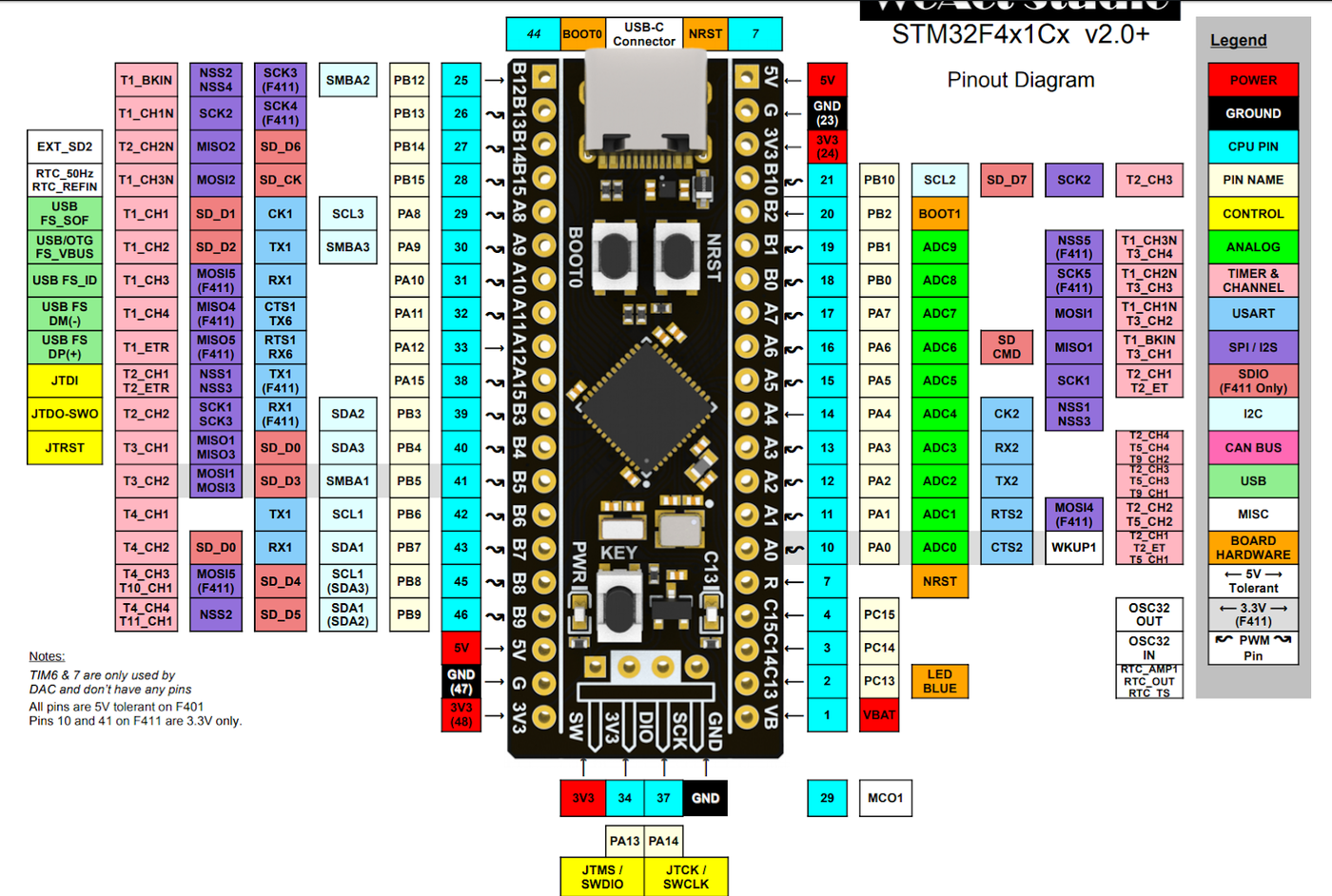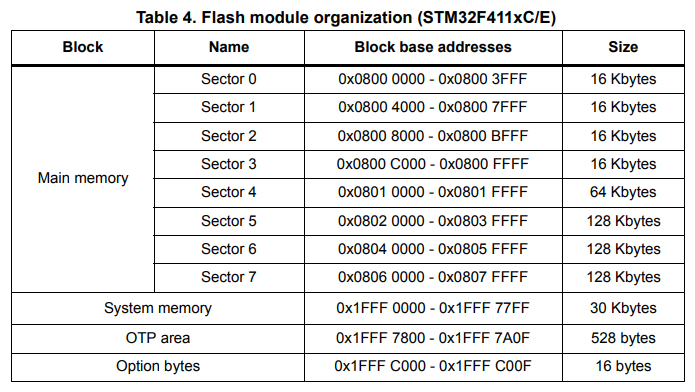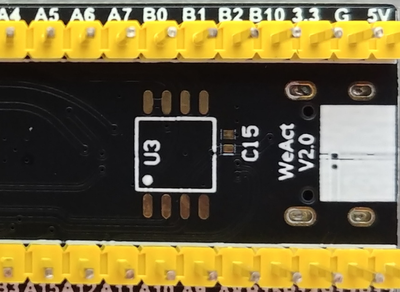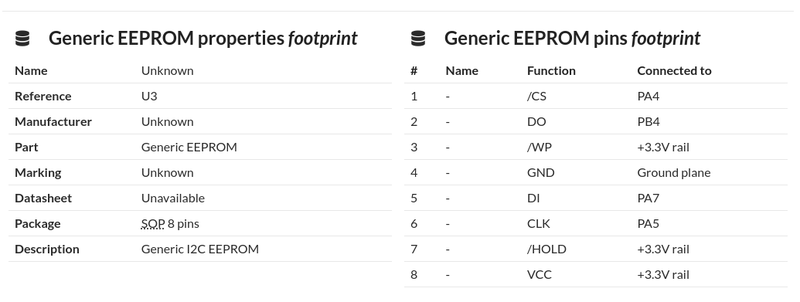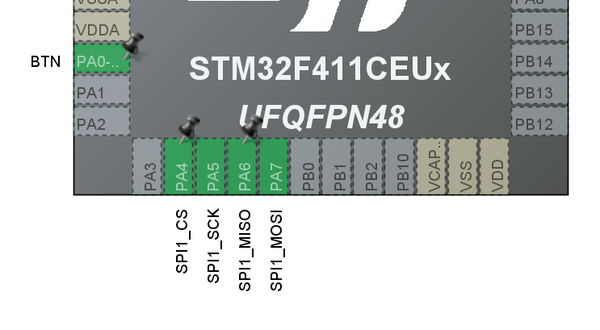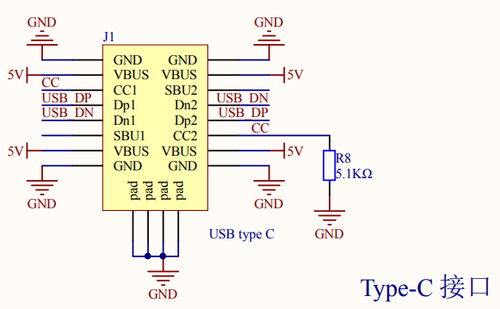Difference between revisions of "Black Pill"
(→Videos) |
|||
| (39 intermediate revisions by the same user not shown) | |||
| Line 1: | Line 1: | ||
| − | [[Category:STM32]] [[Category:STM32 Development Board]] | + | [[Category:STM32]] [[Category:STM32 Hardware]] [[Category:Development Board]] [[Category:STM32 Development Board]] [[Category:Black Pill]] {{metadesc|WeAct Black Pill V2.0 and clones}} |
| − | The [[Black Pill]] [[STM32 Development Boards|development board]] is a good choice. It was designed by WeAct Studio, but like the [[Blue Pill]] many different versions exist. Unlike the [[Blue Pill]], at least at the time of writing this, they all appear to be using genuine [[STM32]] processors (read: no cheaper clones exist). Here are two different ones, both of which I suspect are clones: | + | [[File:Blackpill with st-link.jpg|300px|thumb|Blackpill board with [[DIY STM32 Programmer (ST-Link/V2-1)|ST-Link]]]] |
| + | The [[Black Pill]] [[STM32 Development Boards|development board]] is a good choice. Of the commercially available development modules, this is one of the best. It was designed by WeAct Studio, but like the [[Blue Pill]] many different versions exist. Unlike the [[Blue Pill]], at least at the time of writing this, they all appear to be using genuine [[STM32]] processors (read: no cheaper clones exist). Here are two different ones, both of which I suspect are clones (and both working just fine): | ||
[[File:Two Different Black Pill Boards.jpg|600px]] | [[File:Two Different Black Pill Boards.jpg|600px]] | ||
| + | |||
| + | == Videos == | ||
| + | |||
| + | The [[Black Pill]] board is used in several (not all) of our tutorial videos. | ||
| + | |||
| + | You can watch the video on youtube here: [https://www.youtube.com/watch?v=O6cNvE9ZrVU https://www.youtube.com/watch?v=O6cNvE9ZrVU] (full series [[STM32 Getting Started Tutorial Video Series (by STM32World)|here]]). | ||
| + | |||
| + | {{#ev:youtube|O6cNvE9ZrVU}} | ||
| + | |||
| + | == Features == | ||
The [[Black Pill]]s are typically based on a STM32F401 or STM32F411 (both of the above are the F411 version) and offers the following specs: | The [[Black Pill]]s are typically based on a STM32F401 or STM32F411 (both of the above are the F411 version) and offers the following specs: | ||
| Line 10: | Line 21: | ||
* 25 MHz main crystal | * 25 MHz main crystal | ||
* 32.768 kHz RTC crystal | * 32.768 kHz RTC crystal | ||
| + | * 512 kB Flash (STM32F411 version) | ||
| + | * 128 kB RAM | ||
| + | * 1 [[ADC]] (no [[DAC]]) | ||
* USB-C connector | * USB-C connector | ||
* Programming header | * Programming header | ||
| − | [[File:black pill pinout.png|800px]] | + | == Pinout == |
| + | |||
| + | <div class="res-img"> | ||
| + | [[File:black pill pinout.png|1400px]] | ||
| + | </div> | ||
| + | |||
| + | == Built-in LED == | ||
| + | |||
| + | Notice, the [[Black Pill]] board have got a built-in [[LED]] attached to PC13. This is perfectly Ok, if you want to toggle the [[LED]] on or off. Unfortunately, no timer channel is connected to this pin, so it is not normally possible to regulate the intensity using [[PWM]]. Fortunately, it '''is''' possible to do [[PWM]] by bit-banging the pin. See [[STM32 bit bang PWM]] for an explanation on how this can be done. | ||
| + | |||
| + | {{#ev:youtube|RNMuQwfvm74}} | ||
| + | |||
| + | == Flash Layout == | ||
| + | |||
| + | [[File:STM32F411 Flash Sector Layout.png|800px]] | ||
| + | |||
| + | == EEPROM Footprint == | ||
| + | |||
| + | The [[Black Pill]] board usually have an unpopulated footprint on the reverse side of the PCB intended for a generic EEPROM: | ||
| + | |||
| + | [[File:EEPROM Footprint.png|400px]] | ||
| + | |||
| + | On the [https://stm32-base.org/boards/STM32F411CEU6-WeAct-Black-Pill-V2.0.html Board Info] page, this is documented as: | ||
| + | |||
| + | [[File:EEPROM Footprint Documentation.png|800px]] | ||
| + | |||
| + | Unfortunately, the clone [[Black Pill]] boards are wired up different. The DO (MISO) is '''not''' wired up to PB4 as indicated but rather PA6 (which makes more sense anyway). Using [[STM32CubeMX]], the right configuration is: | ||
| + | |||
| + | [[File:EEPROM Correct Config.png|600px]] | ||
| + | |||
| + | == USB == | ||
| + | |||
| + | The [[STM32F411]] [[MCU]] on the [[Black Pill]] boards can in principle run in USB Host mode. However, it is worth having a look at the schematics: | ||
| + | |||
| + | [[File:Black Pill USB Connector Schematics.png|500px]] | ||
| + | |||
| + | Both the CC lines are pulled to GND using a 5.1k resistor, which signals that this is a device, ''not'' a host. Also, there is no way to control the power delivery. In short, while the [[MCU]] on these boards '''can''' operate in USB Host mode, there is no way this can be reliably done on the [[Black Pill]] boards. | ||
== Miscellaneous Links == | == Miscellaneous Links == | ||
| Line 19: | Line 69: | ||
* [https://github.com/WeActTC/MiniSTM32F4x1 WeAct Black Pill Github Repository] | * [https://github.com/WeActTC/MiniSTM32F4x1 WeAct Black Pill Github Repository] | ||
* [https://stm32-base.org/boards/STM32F411CEU6-WeAct-Black-Pill-V2.0.html Board Info] | * [https://stm32-base.org/boards/STM32F411CEU6-WeAct-Black-Pill-V2.0.html Board Info] | ||
| − | * [https://stm32-base.org/assets/pdf/boards/original-schematic-STM32F411CEU6_WeAct_Black_Pill_V2.0.pdf Original Schematics] | + | * [https://stm32-base.org/assets/pdf/boards/original-schematic-STM32F411CEU6_WeAct_Black_Pill_V2.0.pdf Original Schematics ver. 2.0] |
| − | * [https://www.st.com/resource/en/datasheet/stm32f411ce.pdf Datasheet] | + | * [https://stm32-base.org/assets/pdf/boards/original-schematic-STM32F401CCU6_WeAct_Black_Pill_V1.2.pdf Original Schematics vers. 1.2] |
| + | * [https://www.st.com/resource/en/datasheet/stm32f411ce.pdf STM32F411x Datasheet] | ||
| + | * [https://ipfs.io/ipfs/QmUGduV94vdwiX5FpM5uAbNPBNw48gFXgJZyFJFeLJrbws/dm00119316-stm32f411xc-e-advanced-arm-based-32-bit-mcus-stmicroelectronics.pdf STM32F411xC/E advanced Arm®-based 32-bit MCUs Reference Manual] | ||
| + | * [https://github.com/trebisky/stm32f411 Bare metal coding on the STM32F411/Black Pill] | ||
| + | * [https://github.com/lbthomsen/blackpill/tree/master/bitbang_pwm Bit-bang PWM on built-in LED] | ||
| + | |||
| + | Notice, most - if not all - clone boards match the 1.2 schematics. | ||
Latest revision as of 12:07, 11 November 2024
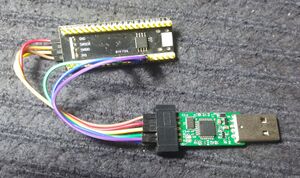
The Black Pill development board is a good choice. Of the commercially available development modules, this is one of the best. It was designed by WeAct Studio, but like the Blue Pill many different versions exist. Unlike the Blue Pill, at least at the time of writing this, they all appear to be using genuine STM32 processors (read: no cheaper clones exist). Here are two different ones, both of which I suspect are clones (and both working just fine):
Videos
The Black Pill board is used in several (not all) of our tutorial videos.
You can watch the video on youtube here: https://www.youtube.com/watch?v=O6cNvE9ZrVU (full series here).
Features
The Black Pills are typically based on a STM32F401 or STM32F411 (both of the above are the F411 version) and offers the following specs:
- STM32F4 (STM32F401 or STM32F411) processor
- Same footprint (I/O pins)
- 25 MHz main crystal
- 32.768 kHz RTC crystal
- 512 kB Flash (STM32F411 version)
- 128 kB RAM
- 1 ADC (no DAC)
- USB-C connector
- Programming header
Pinout
Built-in LED
Notice, the Black Pill board have got a built-in LED attached to PC13. This is perfectly Ok, if you want to toggle the LED on or off. Unfortunately, no timer channel is connected to this pin, so it is not normally possible to regulate the intensity using PWM. Fortunately, it is possible to do PWM by bit-banging the pin. See STM32 bit bang PWM for an explanation on how this can be done.
Flash Layout
EEPROM Footprint
The Black Pill board usually have an unpopulated footprint on the reverse side of the PCB intended for a generic EEPROM:
On the Board Info page, this is documented as:
Unfortunately, the clone Black Pill boards are wired up different. The DO (MISO) is not wired up to PB4 as indicated but rather PA6 (which makes more sense anyway). Using STM32CubeMX, the right configuration is:
USB
The STM32F411 MCU on the Black Pill boards can in principle run in USB Host mode. However, it is worth having a look at the schematics:
Both the CC lines are pulled to GND using a 5.1k resistor, which signals that this is a device, not a host. Also, there is no way to control the power delivery. In short, while the MCU on these boards can operate in USB Host mode, there is no way this can be reliably done on the Black Pill boards.
Miscellaneous Links
- WeAct Black Pill Github Repository
- Board Info
- Original Schematics ver. 2.0
- Original Schematics vers. 1.2
- STM32F411x Datasheet
- STM32F411xC/E advanced Arm®-based 32-bit MCUs Reference Manual
- Bare metal coding on the STM32F411/Black Pill
- Bit-bang PWM on built-in LED
Notice, most - if not all - clone boards match the 1.2 schematics.

